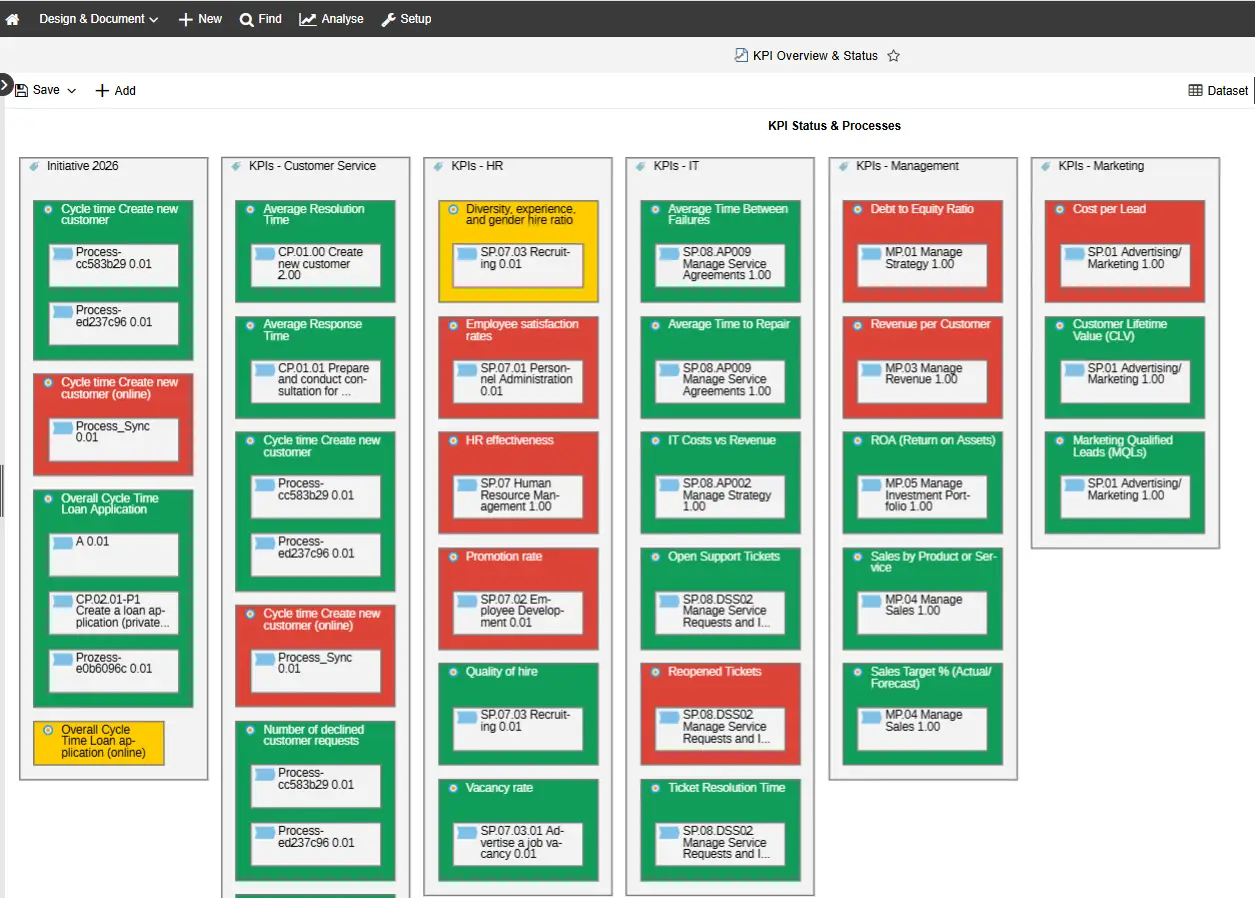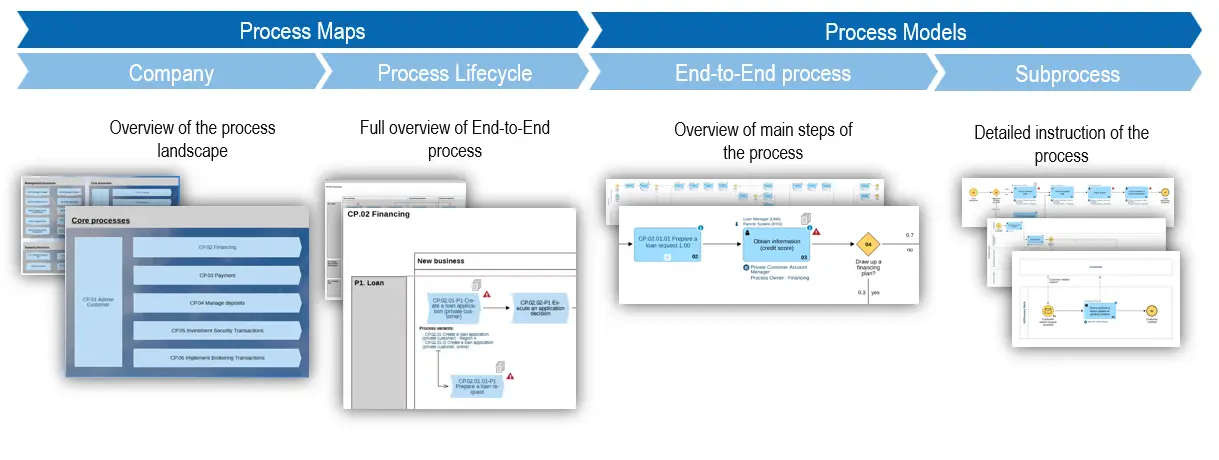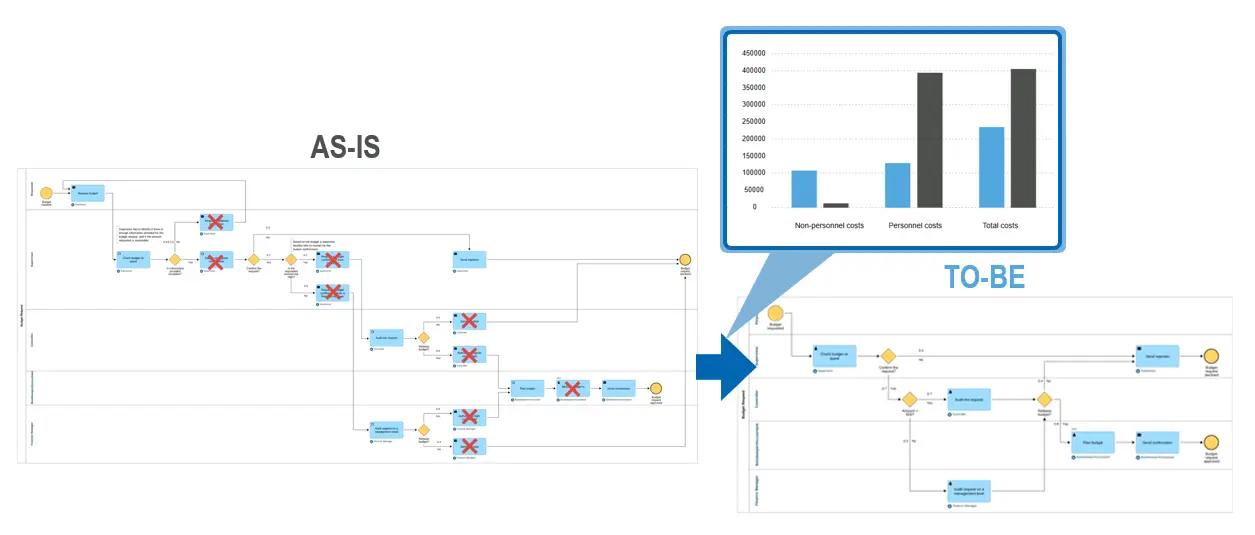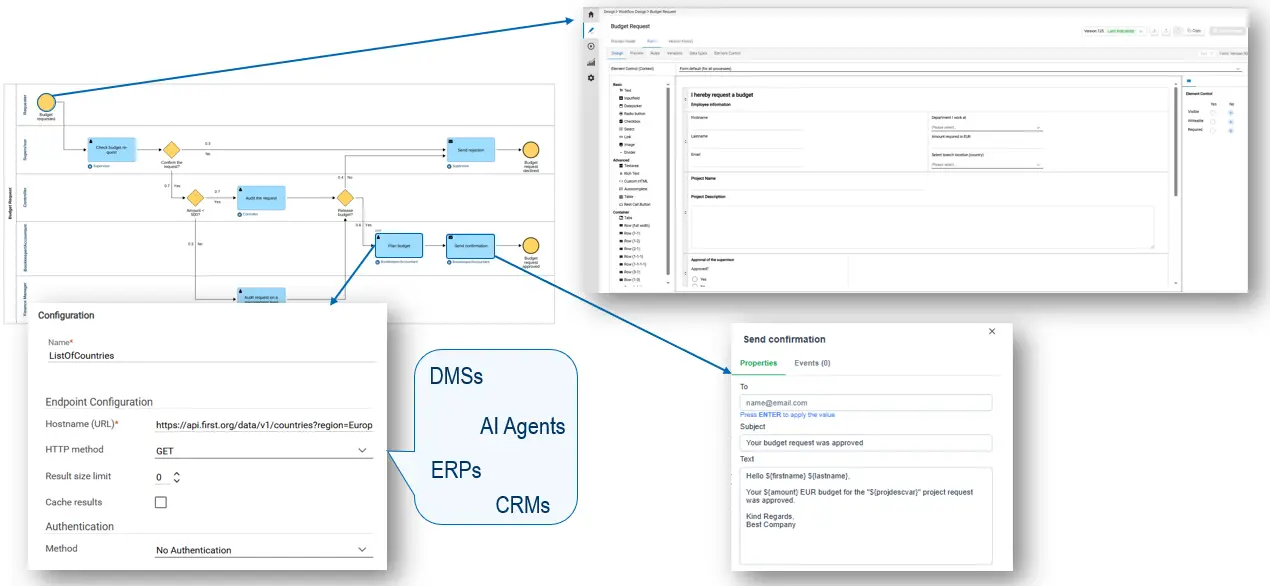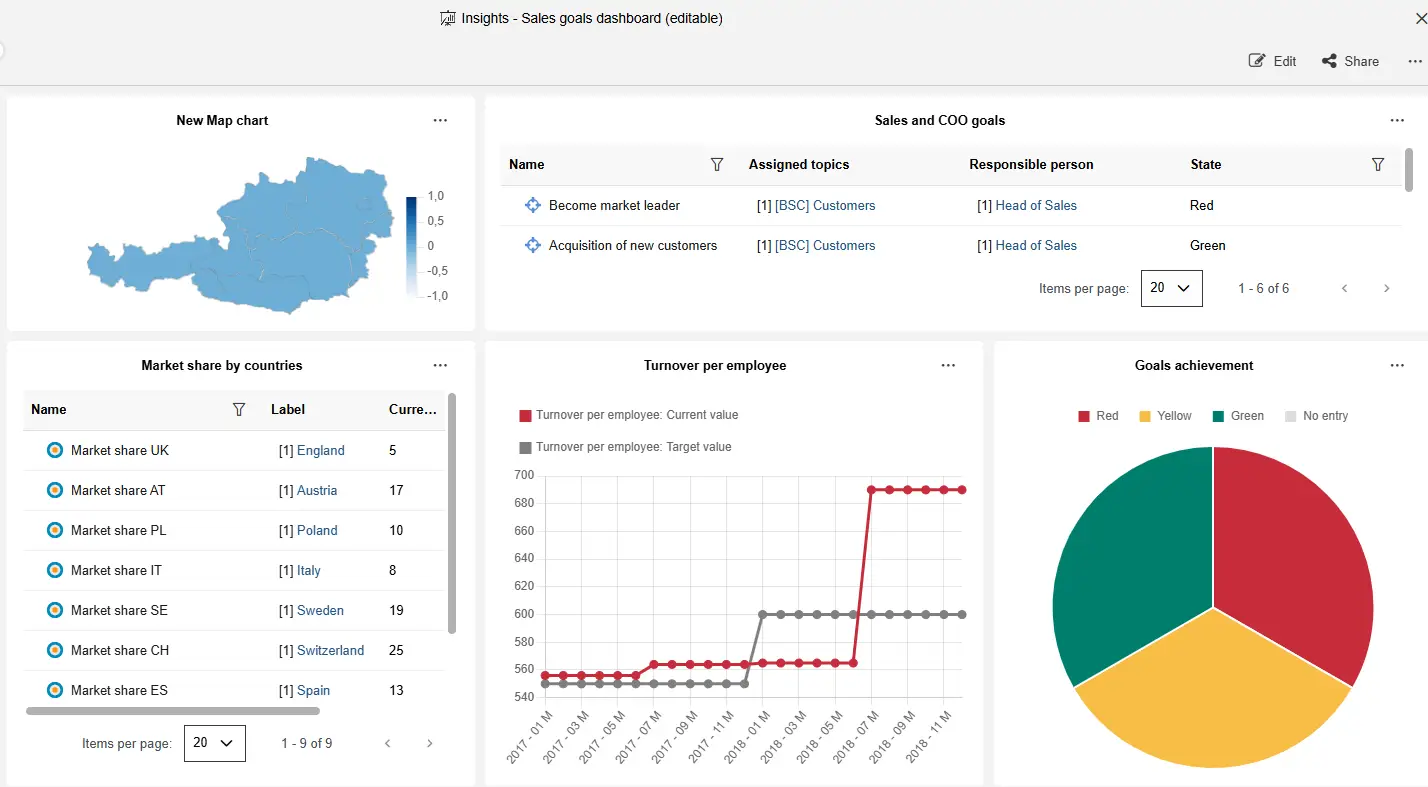Found this helpful? Share it with peers.
Introduction
In many organizations, even simple activities like approving an invoice or onboarding a new employee are handled differently across departments. One team uses its own Excel tracker while another manages approvals by email. Each of these methods may seem practical at first, yet over time, they create a growing disconnect between how the organization thinks it operates and how it actually does. And these inconsistencies carry real cost.
That is why many organizations turn to process standardization. It strengthens consistency across teams and gives everyone the same foundation to work from. Organizations that also use a specialized tool like ADONIS take standardization further by making it easier to apply and maintain those standards in daily work. So, what does process standardization actually mean for an organization?

What Is Process Standardization?
Process Standardization forms the foundation for an organization’s shift from a fragmented Current Operating Model (COM) to a scalable and high-performing Target Operating Model (TOM). It replaces scattered and locally adapted practices with shared structures that reinforce stability and give management stronger oversight.
The goal is to establish one consistent way of executing work across the organization. By defining clear and repeatable processes, standardization removes unnecessary variation and helps operations run efficiently toward strategic objectives. This shared framework makes it possible to measure performance accurately and maintain full compliance.
When also supported by a central Process Portal, standardization becomes part of daily work. Employees can access approved process versions, understand their responsibilities, and follow a single reference point for how work should be done.
The Real Cost of Inconsistent Processes
When process fragmentation matures it causes severe drift in the operating model that can be characterized by the following symptomatology:
Wasted Time & Rework
Resources are consumed by recurring inefficiencies, with teams repeatedly solving the same problems across slightly different process versions
Compliance & Audit Risk
As processes differ across teams, controls are applied unevenly and compliance weakens. Documentation shows gaps, and audit evidence is often incomplete or out of date.
Low Employee Productivity
Productivity drops as teams stay caught in reactive mode. They spend most of their time managing urgent issues and little time is left to strengthen the processes behind them.
Poor Customer Experience
Process inconsistencies eventually reach the customer. Service quality varies from case to case, and the overall experience loses cohesion.
Why Process Standardization Matters Now
Every organization may feel the impact of inconsistency differently, but the benefits of standardization are universal:
-
Reduced redundancy and rework. Teams replace isolated practices with one shared way of working across departments.
-
Fewer reactive fixes. Stable and repeatable processes make it easier to improve and innovate.
-
Stronger operational visibility and control. A single reliable foundation supports better performance measurement, compliance, and decision-making.
-
Faster execution of strategic initiatives. Shared standards remove ambiguity and help departments progress together.
Process Standardization also serves as the foundation for automation and process mining. Automated workflows require clear and consistent models to function correctly, while process mining depends on comparable data to identify real performance patterns. These technologies can only create value when built on standardized processes.
Hint: See how standardization, process mining and AI in ADONIS lay the groundwork for intelligent automation by transforming fragmented manual processes into reliable, data-driven workflows.
How to Achieve Effective Process Standardization
The best way to start is to narrow down five organizational elements that form the pillars of the company’s operating model:
-
Processes are the backbone of operations that define how value is created and delivered. Standardizing them removes inefficiencies and ensures consistent execution across the organization.
-
Roles define employee responsibilities within processes and establish clear positioning in the organizational structure. Without defined zones of authority, even well-designed processes can fail.
-
Technology includes the tools, systems, and integrations that enable value creation. When not aligned or unified, technology can disrupt execution instead of improving it.
-
Goals and KPIs serve as the measuring mechanisms of the operating model. Goals set direction, while KPIs track success. Implementing an effective performance measurement system allows continuous monitoring of how processes actually perform.
-
Governance ensures rules and accountability are in place to support compliance and continuous improvement. It oversees processes, roles, technology, goals, and KPIs to keep them operating as a harmonized system. With proper governance, the operating model becomes disciplined and resilient to external change.
By examining these pillars, an organization can assess its current operating model objectively. This helps uncover weak points in processes and unclear responsibilities across roles, as well as areas where technology use needs improvement. It also shows when KPIs drift from strategic goals, pointing to areas for operational and strategic improvement.

5 Pillars of Operating Model
4 Steps to Process Standardization
The path to effective process standardization begins with assessing the Current Operating Model (COM). This first step captures how the organization operates today and identifies where inconsistencies occur. The results provide the basis for designing the Target Operating Model (TOM) in the next phase. Once the new model is defined, it is implemented and sustained to ensure it delivers lasting performance and supports continuous improvement.
Step 1: Assess and Document COM
Aim: clarify strategic goals and build a clear overview of current operations to identify where inconsistencies impact performance.
Clarify Goals and KPIs
Begin the evaluation by reviewing the relevance of existing goals. If the organization’s strategic direction has changed, determine which goals still align with it and which need to be updated or added. Next, assess the defined KPIs to ensure they are clearly formulated and effectively measure progress toward those goals.
KPI Status in ADONIS Analysis
Consolidate the AS-IS and Scope the Improvement Area
This stage looks at all existing processes and their variations to pinpoint where improvement is needed most. Start by documenting how each process currently runs and why different versions exist. Review the organizational pillars discussed earlier to understand how work gets done. Pay attention to issues such as unclear responsibilities, duplicated effort, bottlenecks, or outdated steps. Identify which processes help achieve KPIs and which hold performance back. These insights show where workflow standardization will have the greatest impact.
Process Description with ADONIS
Capture Execution Reality
Begin by evaluating how processes run today. Identify those that involve repetitive, non-value-adding activities or consume too much of employees’ time. Observe which workflows are the best candidates for optimization. Analyze the execution data of already digitized processes and determine how their behaviour deviates from the designed model. Ask yourself: Which improvement opportunities can we spot?
Process Execution Analysis with ADONIS
As a result, you gain a clearer view of current operations, showing what works well and where performance is constrained by misalignment or inefficiency. These findings form the basis for designing an improved way of working, the Target Operating Model (TOM).
Step 2: Design TOM
Aim: create a harmonised, scalable way of working by removing unnecessary process variation and aligning resources, systems, and controls.
Redefine Goals and KPIs
Refine goals and KPIs based on the identified gaps and areas not fully covered. These may differ depending on organizational needs, such as reducing execution time, lowering costs, or increasing the value of new applications introduced into the organization. Use industry standards for TOM architecture (e.g. eTOM, APQC, SCOR, VDMR) and relevant benchmarks as reference points for your standardization initiative. To strengthen the TOM, review existing risk controls, address gaps, and remove duplicates. Collaborate with departments such as IT, Legal, and Compliance to establish aligned control coverage across all key areas. This approach enables the organization to mitigate operational risks effectively and sustain the performance of future processes.
Eliminate Redundant Variants
As visibility and traceability of organizational goals have been established, the next step is to standardize the workflows. Considering the inefficiencies identified in the previous phase, the aim is to unify process paths and eliminate unnecessary variants. Use model comparison to review different versions of the same workflow and see what works best. Improve the main process by keeping the stronger elements from its variants, for instance, more efficient tasks or better application use. When evaluating results, look at each workflow within the wider value chain to confirm it performs well on its own and fits smoothly into the full end-to-end process.
Process Comparison with ADONIS
Optimize Process Execution
With unified processes in place, the focus shifts to further performance improvement. Define clear role accountability for each task to remove overlaps and gaps in responsibility. Assess personnel capacity and the nature of their work, particularly in processes that involve repetitive or time-intensive activities. To estimate the time and cost required for execution, apply process simulation. It provides reliable data to optimize processes and quantify potential cost reductions compared to the original version. This analysis also helps identify opportunities for full process digitalization or automation of specific workflow paths. In addition, simulation can verify whether the redesigned process meets expected KPIs and supports organizational goals.
Process Simulation and Optimization with ADONIS
As a result, we define a unified and optimized way of working, eliminating process variation, aligning roles and systems, and refining KPIs to support strategic intent. This design becomes the blueprint for scalable, efficient execution in the next phase.
Step 3: Implement TOM
Digitize Processes
Focus on the most suitable candidates for process digitization and evaluate the options for implementing enterprise platforms already in use (e.g. ERP, CRM, DMN) or introducing new ones. For workflow management or semi-automated scenarios, process automation software offers the best fit. The key value of digitization lies in its ability to follow a standardized process by default, minimizing the risk of non-compliant execution.
Workflow Digitalization with ADONIS Process Automation
Enable Organizational Readiness
To make the TOM executable, an organization must prepare its workforce for change by refining existing roles, responsibilities, and structure. This may involve upskilling employees, defining new roles, creating teams, merging selected functions, or outsourcing specialized activities. Effective change management is essential for a smooth transition to the new structure. Clear communication and gradual onboarding help embed the new way of working into daily routines.
Institutionalize Ownership and Governance
Announce and explain updates to organizational goals, along with the revised KPIs and controls applied to operational processes. Ensure that every role has complete information about the processes it supports and understands how to perform tasks in compliance with the latest SOPs.
Ownership tracking in ADONIS
Establish Continuous Monitoring
From the start, implement the right process performance monitoring to support and maintain the TOM. This enables accurate KPI assessment and allows deviations to be detected early, preventing process fragmentation. If left unchecked, such deviations can quickly become routine and undermine standardized processes.
Step 4: Sustain Operating Model
Aim: maintain alignment between daily operations and strategic goals, ensuring that standardization remains effective and adaptable over time.
Monitor Process and KPI Health
Keep in mind the changing context within which organization operates. Steer your goals and control mechanisms adapting to the regulatory environment, market trends and technologies that can simplify and improve your operations. Track your performance goals and continuously assess the reliability of collected information. These are the best validators of your organizational strategy.
KPI tracking with ADONIS Strategy & Performance Management
Foster Continuous Improvement Culture
As goals and KPIs evolve, processes must evolve with them. The most effective way to achieve this is by fostering a culture of continuous improvement across the organization. Keep employees informed and engaged in understanding how and why processes work. Their feedback provides valuable insights that can be evaluated against established performance metrics. Use these findings to guide the operating model towards more advanced and harmonized processes.
Ultimately, maintaining this culture ensures that the Target Operating Model (TOM) stays resilient and relevant.
How to enhance Process Standardization with ADONIS?
To sustain and scale standardization, organizations need a structured way to manage and refine their processes. ADONIS provides this foundation with core capabilities to design and analyze processes. Building on it, the following solutions strengthen standardization further and expand its impact across the operations.
ADONIS Process Simulation
Offers a comprehensive toolset for quantitative process assessment. It helps evaluate current workflows by comparing execution times and costs. It also enables analysis of employee role involvement and estimate benefits of further optimization through enterprise systems or process automation.
Check out how ADONIS Process Simulation can make your processes faster and more efficient.
ADONIS Process Automation
Easy-to-use and configure workflow automation that helps streamline operations and boost teams productivity. It enables various options for workflow digitalization from request approvals and GenAI task orchestration till data exchange between enterprise systems.
Make automation effortless. Try ADONIS Process Automation today.
ADONIS Strategy & Performance Management
An extensive module not only to define goals and measurable KPIs but also to track performance trends and status of each target. Additionally, it provides broad contextual information to narrow down how each KPI impacts your organization, and various options to analyze and present the performance insights to key decision-makers.
Make strategic performance management simple and effective with ADONIS Strategy & Performance Management
Summary
Effective Process Standardization gives organizations the stability to change and scale confidently. Once the foundation is in place, optimization efforts stop being a reaction to problems and become a guided, data-driven practice.
With ADONIS, you can take standardization further and start actively shaping how your organization operates and continuously improves. See for yourself!



